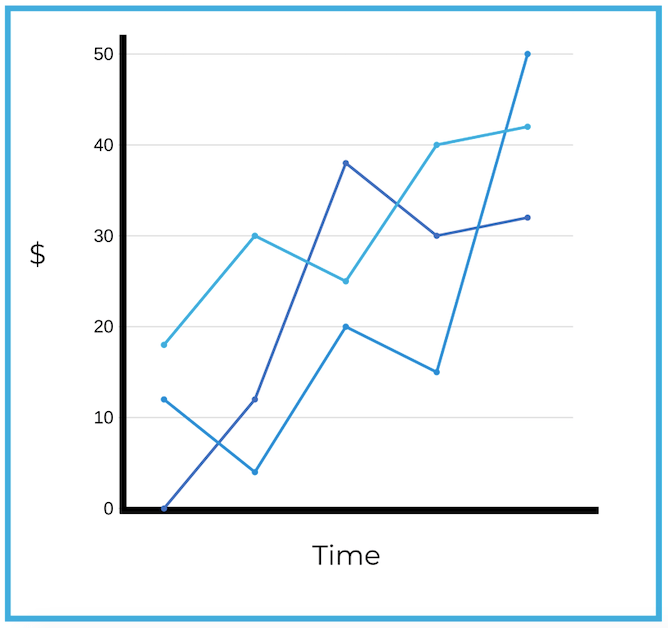Investors utilize spreads for many different reasons, but market sentiments are typically bullish or bearish depending on the type of spread. We’ll learn more about the intent of these strategies in the next few chapters.
There are two large categories of spreads: call spreads and put spreads. Let’s look at examples of each:
An example of a call spread:
Long 1 ABC Jan 60 call
Short 1 ABC Jan 70 call
When an investor goes long a call and short a call at the same time, they’ve created a call spread. It doesn’t matter if the two options have different strike prices, expirations, or if both are different. It’s a call spread if the investor is long and short a call simultaneously.
Next, an example of a put spread:
Long 1 ABC Mar 40 put
Short 1 ABC Jun 40 put
When an investor goes long a put and short a put at the same time, they’ve created a put spread. Once again, it doesn’t matter if the two options have different strike prices, expirations, or if both are different. It’s a put spread if the investor is long and short a put simultaneously.
The difference in strike prices and/or expirations across a spread determines its classification. There are three spread classifications:
First, let’s start with a vertical (price) spread:
Long 1 ABC Jan 60 call
Short 1 ABC Jan 70 call
A vertical spread exists when the two contracts have different strike prices, but maintain the same expiration. As you can see, both options have different strike prices ($60 and $70), but maintain the same January expiration. Vertical spreads are also known as price spreads, which should make sense. The term ‘spread’ means difference, and the strike prices differ across the two legs.
Next, let’s look at a horizontal (calendar/time) spread:
Long 1 ABC Mar 40 put
Short 1 ABC Jun 40 put
A horizontal spread exists when the two contracts have different expirations, but maintain the same strike price. As you can see above, both options have different expirations (March and June), but maintain the same $40 strike price. Horizontal spreads are also known as time or calendar spreads, which should make sense. Again, the term ‘spread’ means difference, and the expirations differ across the two legs.
If you’re wondering, vertical (up and down) and horizontal (side to side) relate to a chart. The vertical axis of a finance chart is always price, while the horizontal axis is always time.

Last, let’s look at a diagonal spread:
Long 1 ABC Sep 45 call
Short 1 ABC Nov 55 call
A diagonal spread exists when the two contracts have different expirations and strike prices. As you can see above, both options have different expirations (September and November) and strike prices ($45 and $55).
It is unlikely you’ll encounter any math-related test questions on diagonal spreads, but you may be asked to identify them.
Sign up for free to take 12 quiz questions on this topic